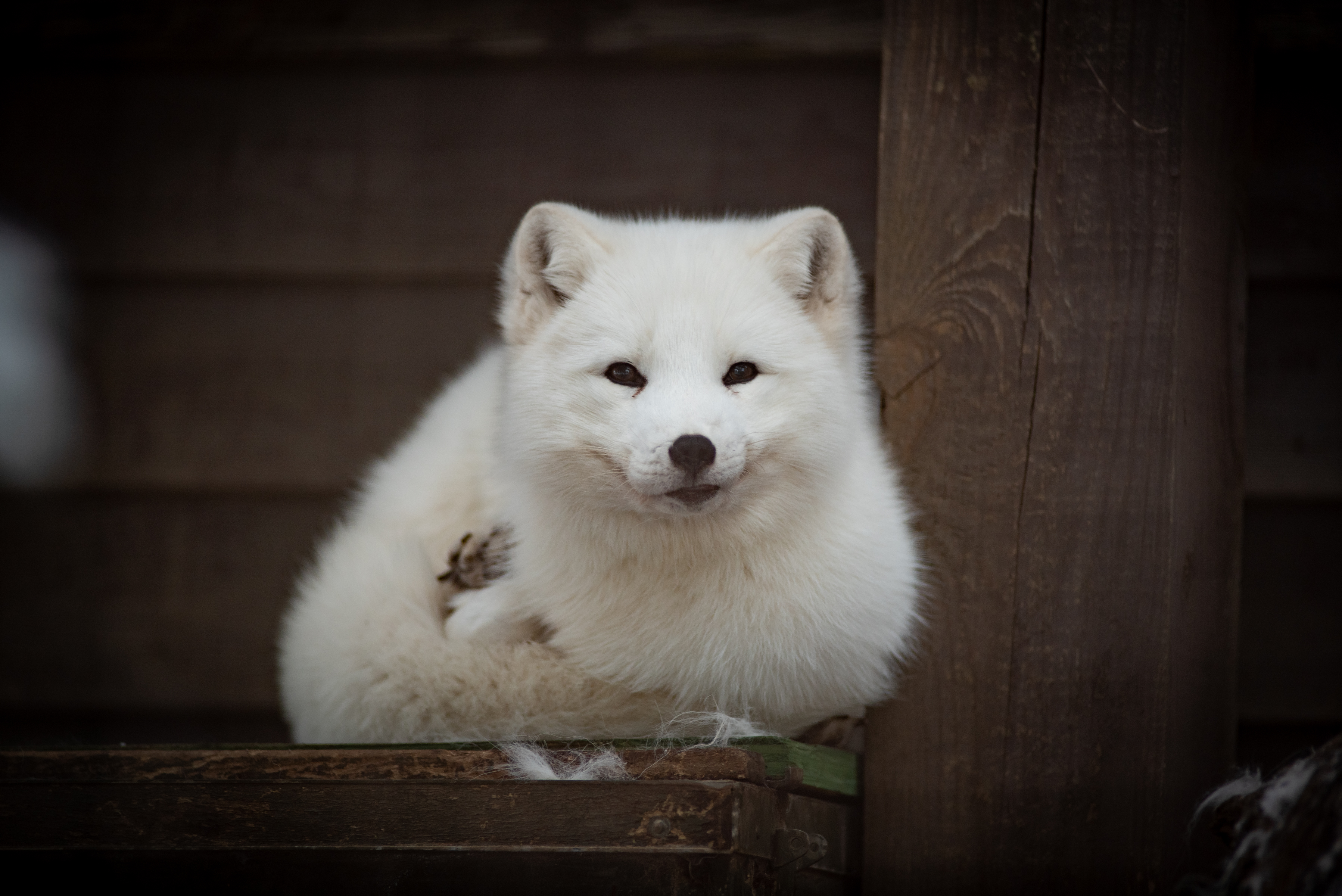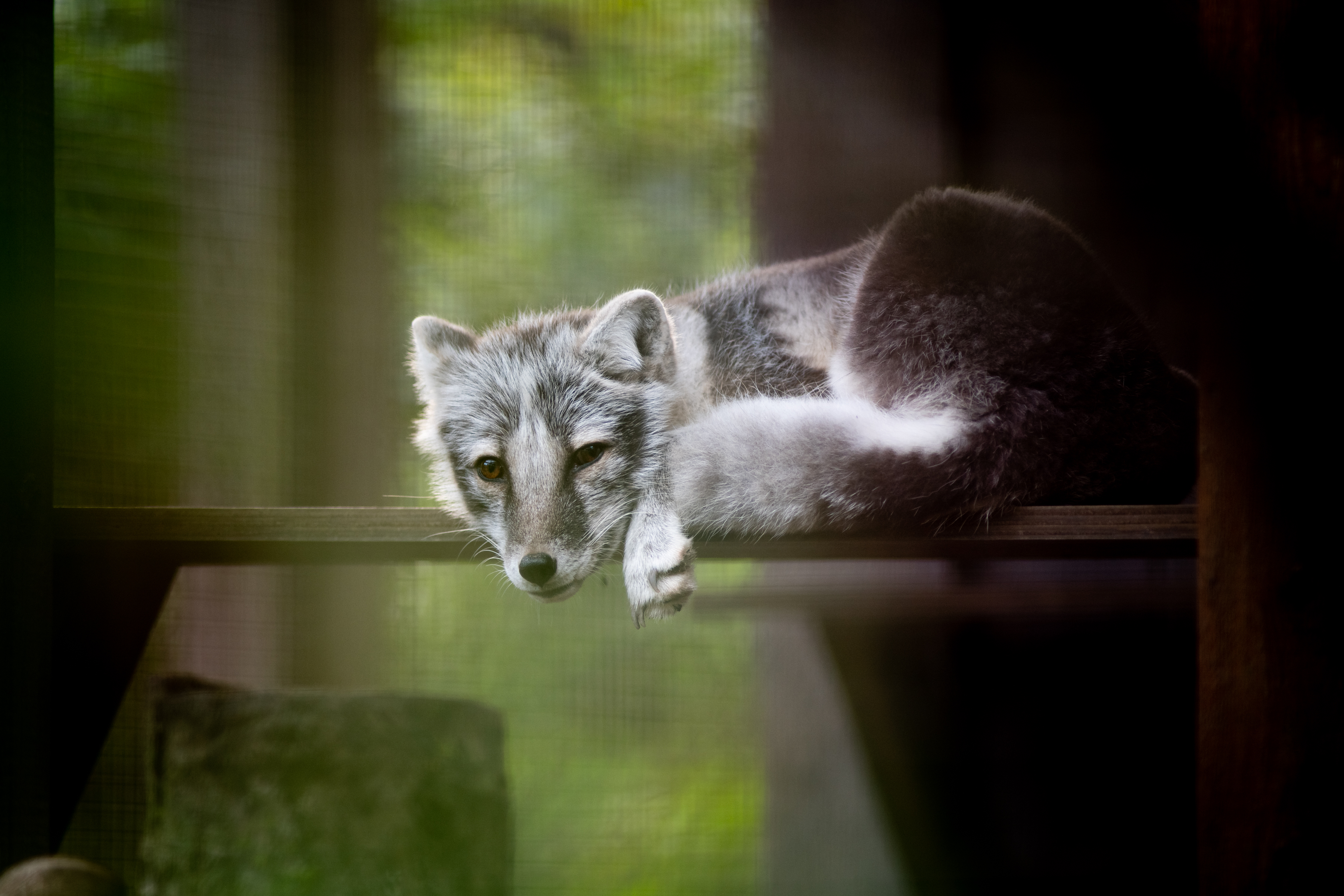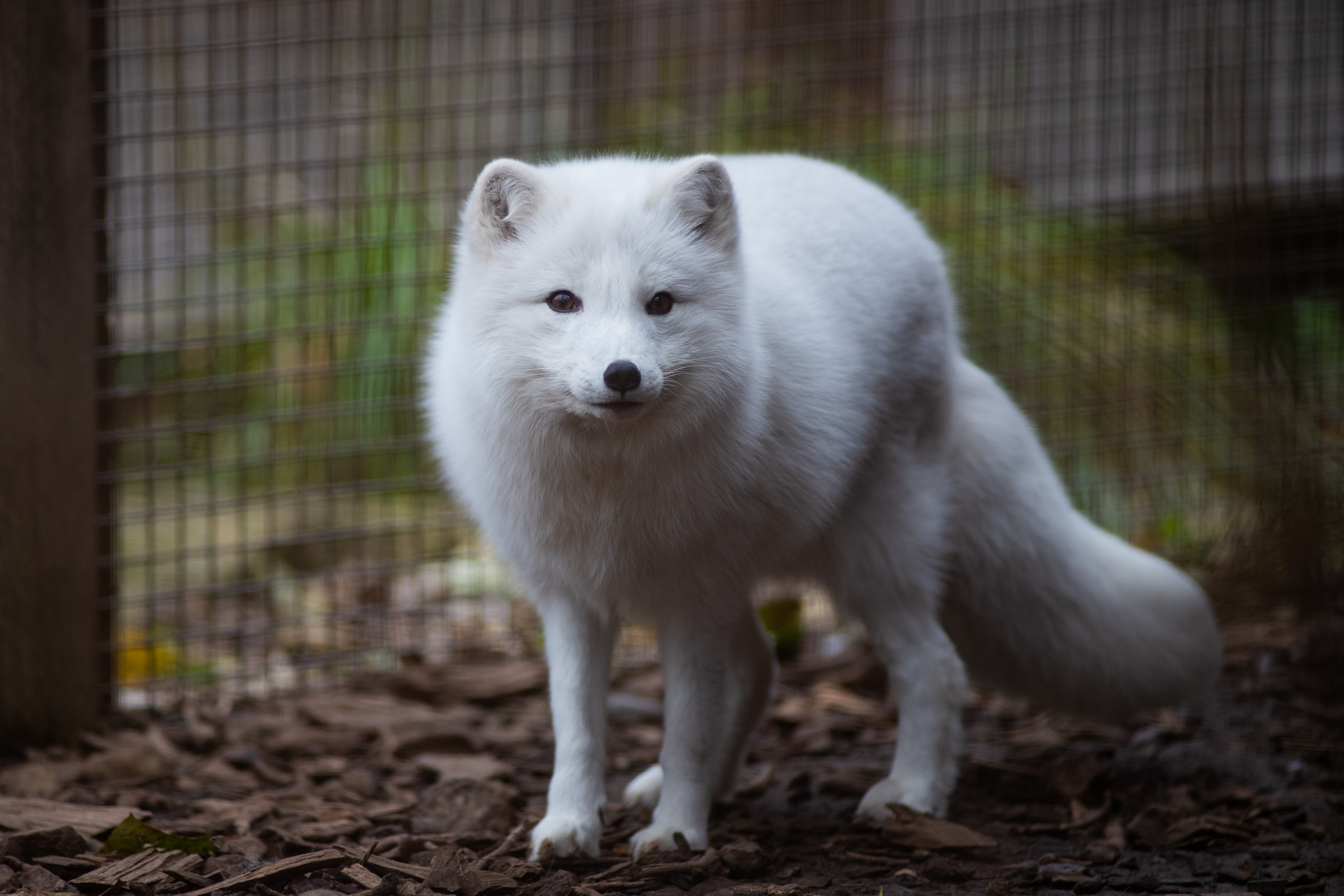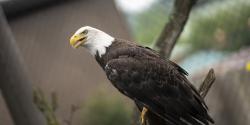The Arctic fox is an extraordinary creature adapted to survive in one of the harshest environments on Earth! Let’s explore the fascinating world of the Arctic fox, highlighting its physical adaptations, diet, habitat, and behavior.
Physical Adaptations
Arctic foxes are renowned for their incredible adaptations to cold climates. They sport a dense, woolly coat that changes color with the seasons—white in winter to blend with the snow and grayish-brown in summer to match the tundra. Their compact bodies, short ears, and snouts help minimize heat loss, while their paws, covered in dense fur, allow them to traverse icy terrains without freezing.


Diet and Hunting Techniques
Arctic foxes are opportunistic feeders with a varied diet. In the wild, they hunt small mammals like lemmings and birds and scavenge carrion. During the winter, coastal foxes may consume marine mammals, invertebrates, and fish. At the Columbus Zoo, their diet includes chicks and mice meat and kibble on a regular basis, quail, fish, rabbits, and eggs at least once a month. Notably, Arctic foxes have a remarkable hunting method; they use their acute hearing to locate prey beneath the snow, then leap and pounce to catch it.
Habitat and Range
These resilient animals inhabit Arctic and alpine tundra regions across Eurasia, North America, Greenland, and Iceland. They thrive in both coastal and inland areas, sometimes extending their range over sea ice. The Arctic foxes' ability to endure extreme cold is a testament to their evolutionary success.
Behavior and Reproduction
Arctic foxes lead a nomadic and communal lifestyle, often forming small groups for scavenging. They are territorial during the breeding season, using vocalizations and scent markings to communicate. Mating typically occurs from April to July, with females giving birth to litters of 5-8 pups in complex dens. Both parents share the responsibility of raising the young, ensuring their survival in the challenging Arctic environment.
Conservation Status and Threats
Currently listed as "Least Concern," Arctic fox populations are stable, though they face threats from climate change, which affects their habitat and food sources. Predation by red foxes, wolverines, golden eagles, and humans also poses risks. Conservation efforts focus on mitigating these threats and preserving their natural habitats.

Visit the Arctic Foxes at the Columbus Zoo
The Columbus Zoo and Aquarium provides a fantastic opportunity to observe and learn about Arctic foxes up close. By visiting the Zoo, you can support conservation efforts and gain a deeper appreciation for these remarkable animals. Our Arctic fox family can be found in the Zoo’s Polar Frontier region near the brown bear den!
For more information on Arctic foxes and to plan your visit, check out the Columbus Zoo’s Polar Frontier webpage!









